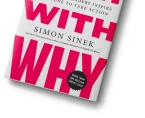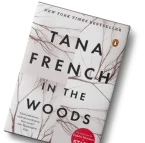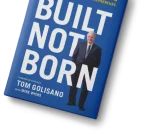
Literary devices are the tools writers use to turn simple sentences into memorable stories.
No matter if you’re a student aiming to master literature analysis, a blogger sharpening your craft, or a business writer trying to elevate your storytelling, understanding literary devices unlocks deeper layers of language and meaning. This guide breaks down 40 essential literary devices—with definitions, multiple examples, and writing tips—to help you read and write with greater skill and intention.
In this article, you will learn:
- Definitions and insights into 40 essential literary devices
- Real-world examples from literature, pop culture, and original writing
- How to use these tools in your own creative or commercial writing
Let’s begin by exploring what literary devices are and why they’re so powerful.
What Are Literary Devices and Why They Matter
Literary devices are techniques that writers use to create special effects, convey meaning, and engage readers more deeply.
These tools go beyond grammar and vocabulary—they shape mood, highlight themes, and enhance emotional resonance. From metaphors that evoke vivid imagery to irony that twists expectations, literary devices give writers control over how readers experience their words.
Here’s why they matter:
- For readers: They reveal layers of meaning, symbolism, and emotion.
- For writers: They elevate storytelling, tighten arguments, and craft unforgettable content.
Writers at Estorytellers, a leading content agency, use literary devices strategically in everything from brand storytelling to professional bios, ensuring each piece isn’t just informative but emotionally resonant and memorable.
40 Most Used Common Literary Devices With Examples
- Metaphor
Definition: A direct comparison between two unrelated things for symbolic meaning.
Examples:
- “The classroom was a zoo.”
- “Time is a thief.”
Use Tip: Avoid clichés—fresh metaphors (e.g., “Grief is a broken piano key that still wants to play”) make the biggest impact.
- Simile
Definition: A comparison using “like” or “as.”
Examples:
- “She was as fierce as a lion.”
- “The car roared like a beast.”
Use Tip: Great for beginner writers—use similes to add clarity or emotion without sounding too abstract.
- Personification
Definition: Assigning human characteristics to non-human things.
Examples:
- “The wind whispered through the leaves.”
- “My alarm clock screamed at me to wake up.”
Use Tip: Adds mood and personality to your setting or objects.
- Hyperbole
Definition: Exaggeration for dramatic effect.
Examples:
- “I’m starving to death.”
- “She’s older than the hills.”
Use Tip: Effective in humor, satire, or emotional monologue.
- Alliteration
Definition: Repetition of initial consonant sounds.
Examples:
- “Sally sells sea shells by the sea shore.”
- “Brilliant blue birds bounced by.”
Use Tip: Use sparingly in prose—strongest impact in poetry, headlines, or slogans.
- Irony
Definition: A contrast between expectation and reality.
Examples:
- “A plumber’s house has leaky pipes.”
- In Shakespeare’s Romeo and Juliet, we know Juliet isn’t dead—but Romeo doesn’t.
Use Tip: Mastering irony adds layers of meaning and often creates emotional or comedic twists.
Turn Literary Skill into Published Success
From ghostwriting to publishing and marketing—we at Estorytellers help you turn your story into a bestselling book.
Start Your Author Journey- Foreshadowing
Definition: Hints or clues about what’s to come.
Examples:
- “She didn’t know it yet, but the old letter would change her life.”
- A dark storm on the horizon foreshadowing a tragic event.
Use Tip: Builds suspense—use it subtly to prepare the reader for upcoming plot points.
- Symbolism
Definition: Using an object, person, or action to represent a deeper meaning.
Examples:
- A heart = love.
- In “The Great Gatsby,” the green light symbolizes unattainable dreams.
Use Tip: Don’t overload symbols; stick to 1–2 key ones per theme.
- Imagery
Definition: Vivid, sensory language that paints a mental picture.
Examples:
- “The crisp scent of pine mingled with the crunch of leaves underfoot.”
- “The sunset spilled orange across the sky like paint on canvas.”
Use Tip: Use all five senses to create a stronger reader experience.
- Allegory
Definition: A narrative that operates on two levels—surface and symbolic.
Examples:
- “Animal Farm” = a farm story and a political allegory of communism.
- “The Lord of the Flies” = survival story + allegory for civilization vs. savagery.
Use Tip: Best for conveying deep moral, political, or philosophical ideas through storytelling.
- Juxtaposition
Definition: Placing two elements side by side to highlight contrast.
Examples:
- A rich character eating beside a starving one.
- A baby crying in a warzone.
Use Tip: Use visual and thematic contrasts to heighten drama or irony.
- Oxymoron
Definition: Two contradictory terms combined.
Examples:
- “Bittersweet,” “deafening silence,” “alone together”
- “He was clearly confused.”
Use Tip: Use to express paradox or emotional conflict concisely.
- Onomatopoeia
Definition: A word that mimics the sound it describes.
Examples:
- Buzz, pop, hiss, crackle
- “The bacon sizzled in the pan.”
Use Tip: Adds realism and texture—especially useful in dialogue or action scenes.
- Euphemism
Definition: A polite or indirect way of saying something harsh or unpleasant.
Examples:
- “Passed away” instead of “died.”
- “Let go” instead of “fired.”
Use Tip: Helpful for tone management in sensitive writing like obituaries, HR content, or political statements.
- Anaphora
Definition: Repetition of the same word or phrase at the start of successive sentences or lines.
Examples:
- “I believe we will win. I believe we are strong. I believe we are ready.”
- Martin Luther King Jr.: “I have a dream…”
Use Tip: Creates rhythm, unity, and emotional intensity—great in speeches and essays.
Turn Your Ideas Into a Published Masterpiece
Estorytellers helps authors write, publish, and promote books that stand out in today’s crowded market.
Start Your Author Journey- Flashback
Definition: A scene set in an earlier time than the main story.
Examples:
- A character remembering their childhood before making a big decision.
- TV shows like “Lost” often use character-centric flashbacks.
Use Tip: Use to reveal character backstory, provide context, or show motivation.
- Motif
Definition: A recurring element or theme in a literary work.
Examples:
- Mirrors appearing throughout a novel to represent identity.
- Rain repeating in key scenes to symbolize sadness or renewal.
Use Tip: Unlike symbols, motifs are patterns that develop meaning through repetition.
- Paradox
Definition: A self-contradictory statement that reveals a deeper truth.
Examples:
- “The more you learn, the less you know.”
- “Freedom is slavery.” – Orwell
Use Tip: Use to provoke thought or highlight complexity in your themes.
- Satire
Definition: Using humor, irony, or exaggeration to expose and criticize.
Examples:
- “The Onion” uses fake news to satirize real issues.
- Jonathan Swift’s “A Modest Proposal” mocks British policy by suggesting cannibalism.
Use Tip: Combine with irony or parody for stronger social commentary.
- Tone
Definition: The author’s attitude toward the subject.
Examples:
- Joyful, sarcastic, melancholic, authoritative
- “The email was short and cold, leaving no room for doubt.” (tone: dismissive)
Use Tip: Diction, sentence structure, and punctuation all shape tone.
- Mood
Definition: The emotional atmosphere of a text.
Examples:
- Gothic horror creates a mood of fear and unease.
- A cozy mystery creates a mood of charm and suspense.
Use Tip: Mood arises from imagery, setting, tone, and pacing.
Write Boldly, Publish Professionally
At Estorytellers, we bring your manuscript to life with expert writing, publishing, and marketing services.
Let’s Publish Your BookAdvanced & Specialized Literary Devices
- Diction
Definition: A writer’s specific word choice that affects tone, clarity, and style.
Examples:
- “Youthful” vs. “childish” — both describe a young person but with different tones.
- Formal diction: “He passed away.” / Informal: “He kicked the bucket.”
Use Tip: Word choice shapes your reader’s perception—always choose with intent.
- Repetition
Definition: Repeating words or phrases for emphasis and rhythm.
Examples:
- “Let it snow, let it snow, let it snow.”
- “Alone, alone, all alone on a wide wide sea.” – Coleridge
Use Tip: Helps emphasize key ideas—especially effective in persuasive writing.
- Antithesis
Definition: A contrast of ideas in a parallel structure.
Examples:
- “It was the best of times, it was the worst of times.” – Dickens
- “Give me liberty or give me death!” – Patrick Henry
Use Tip: Adds power to contrasts and creates rhythm in arguments.
- Colloquialism
Definition: Informal, everyday expressions used in specific regions or communities.
Examples:
- “Y’all” (Southern U.S.)
- “Gutted” (British slang for disappointed)
Use Tip: Adds realism to dialogue, but be aware of your audience.
- Synecdoche
Definition: A part of something used to refer to the whole (or vice versa).
Examples:
- “All hands on deck.” (“hands” = sailors)
- “Nice wheels!” (“wheels” = car)
Use Tip: Adds flair and poetic economy to your writing.
- Metonymy
Definition: Replacing the name of a thing with something closely related.
Examples:
- “The pen is mightier than the sword.” (pen = writing, sword = warfare)
- “Hollywood is obsessed with sequels.”
Use Tip: Creates sophisticated references without being overly direct.
- Chiasmus
Definition: A rhetorical reversal of structures in successive phrases.
Examples:
- “Ask not what your country can do for you — ask what you can do for your country.” – JFK
- “Never let a fool kiss you or a kiss fool you.”
Use Tip: Adds punch and symmetry—ideal for speeches and slogans.
- Litotes
Definition: Understatement using double negatives or a negation of the opposite.
Examples:
- “Not bad” (meaning good)
- “He’s no fool” (meaning he’s clever)
Use Tip: Useful in creating subtlety, irony, or tact.
- Zeugma
Definition: A single word modifies two or more words in different ways.
Examples:
- “She broke his car and his heart.”
- “He caught a train and a cold.”
Use Tip: Good for humorous or poetic effect; can enhance conciseness.
- Tmesis
Definition: Inserting a word or phrase into another word or phrase.
Examples:
- “Abso-bloody-lutely.”
- “Fan-freaking-tastic!”
Use Tip: Adds informal emphasis; best used sparingly and in casual tones.
Your Story Deserves More Than a Draft
Partner with Estorytellers to write, publish, and market a book that builds your name and legacy.
Tell Your Story Right With Estorytellers- Anadiplosis
Definition: Repeating the last word of one sentence or clause at the beginning of the next.
Examples:
- “Fear leads to anger. Anger leads to hate. Hate leads to suffering.” – Yoda
- “She opened a door. A door that led to darkness.”
Use Tip: Creates a chain of thoughts—great for rhythm and tension.
- Polysyndeton
Definition: Repetition of conjunctions (and, or, but) for rhetorical effect.
Examples:
- “He ran and jumped and laughed and cried.”
Use Tip: Builds intensity or overwhelm.
- Asyndeton
Definition: Omitting conjunctions between parts of a sentence.
Examples:
- “I came, I saw, I conquered.”
- “She danced, twirled, leapt.”
Use Tip: Speeds up pacing and adds drama or clarity.
- Apostrophe
Definition: Addressing an absent person, idea, or object as if present.
Examples:
- “O Death, where is thy sting?”
- “Twinkle, twinkle, little star…”
Use Tip: Often used in poetry to express emotion or deep thought.
- Epanalepsis
Definition: Repeating the beginning word of a sentence or clause at the end.
Examples:
- “The king is dead, long live the king.”
- “History is ours, and people make history.”
Use Tip: Creates emphasis and rhetorical symmetry.
- Paralipsis
Definition: Calling attention to something while pretending to omit it.
Examples:
- “I won’t even mention the fact that he arrived late.”
Use Tip: Adds irony or subtle critique.
- Cacophony
Definition: Use of harsh or discordant sounds.
Examples:
- “With throats unslaked, with black lips baked…” – Coleridge
Use Tip: Great for creating unease or chaos in atmosphere.
- Euphony
Definition: Use of pleasant, harmonious sounds.
Examples:
- “Season of mists and mellow fruitfulness…” – Keats
Use Tip: Use in lullabies, poetic passages, or calming tone shifts.
- Climax
Definition: A series of ideas arranged in order of increasing importance.
Examples:
- “He risked his money, his reputation, even his life.”
Use Tip: Use to build emotional or persuasive momentum.
Your Words, Our Publishing Expertise
With Estorytellers, your book is written, designed, and marketed to succeed—professionally and powerfully.
Get Your Book Published With EstorytellersHow to Spot and Use Literary Devices in Your Writing
Using literary devices well takes awareness, balance, and practice. Here are some practical tips:
To spot them while reading:
- Highlight phrases that stand out emotionally or rhythmically
- Ask: What’s being compared? What’s being repeated? Is anything unexpected?
- Read poetry, speeches, and classic literature—they’re full of devices
To use them while writing:
- Start small: use 1–2 new devices per draft
- Read your work aloud—sound reveals rhythm, tone, and pattern
- Rewrite a paragraph with a focus on tone or imagery to practice variety
Pro tip: Avoid using too many literary devices at once—they should support, not overshadow, your message.
How Estorytellers Uses Literary Devices to Improve Your Writing
At Estorytellers, literary devices aren’t just used for flair—they’re core tools in strategic storytelling.
If you are writing a powerful LinkedIn bio, a persuasive website copy, or an emotionally resonant brand story, Estorytellers’ content specialists intentionally use rhythm, imagery, metaphor, and tone to connect with readers on a deeper level. This is what separates generic content from unforgettable communication.
Estorytellers blends:
- Narrative techniques (flashback, mood, foreshadowing)
- Persuasive strategies (antithesis, anaphora, repetition)
- Emotional resonance (imagery, diction, personification)
…to create content that’s sharp, clear, and emotionally intelligent.
Looking to improve your brand voice or create impactful content that resonates? Partner with Estorytellers and let the words do more than just fill space—let them move people.
Conclusion
In this guide, we explored 40 of the most essential literary devices every writer should know. From timeless tools like metaphor and irony to advanced techniques like chiasmus and anadiplosis, each device adds nuance, texture, and emotional weight to writing.
You now know:
- The definitions and purposes of 40 literary devices
- Real-world and original examples that clarify their usage
- How to apply them to improve storytelling, essays, and content marketing
Ready to go deeper? Check out our upcoming post on How Many Words Is the Average Novel? A Comprehensive Writer’s Guide. Or, if you’re a business or brand, reach out to Estorytellers to see how these literary strategies can bring clarity and charm to your message.






























